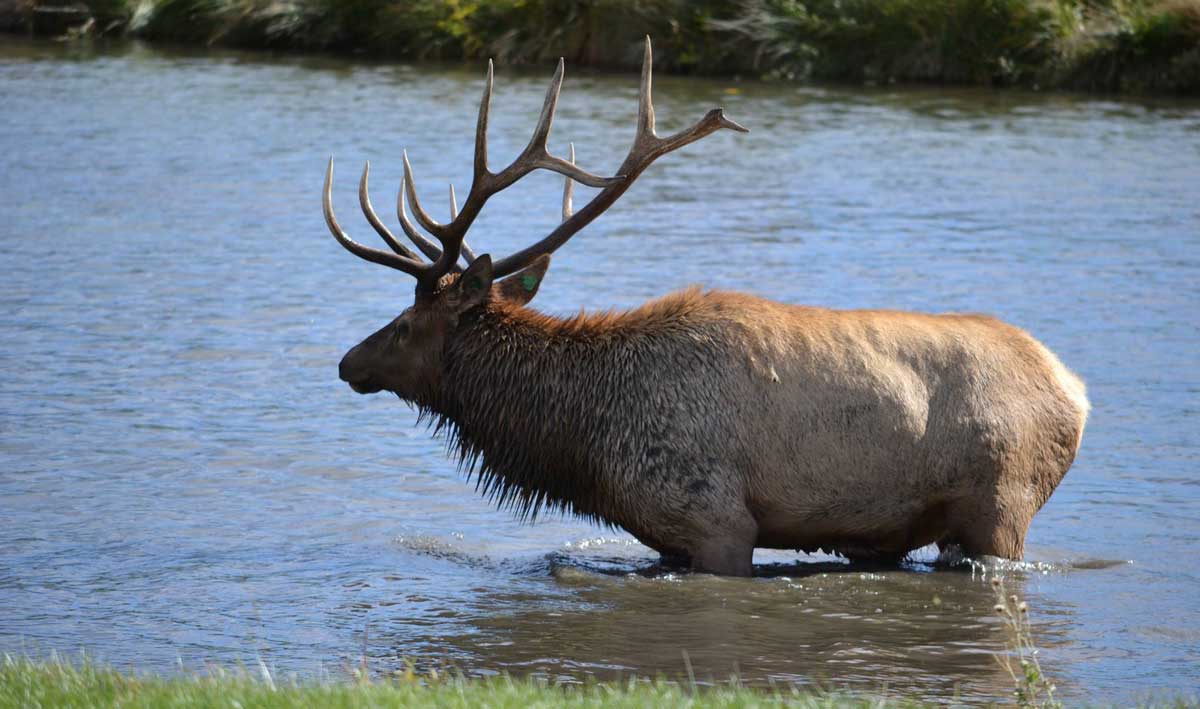All cervids are excellent swimmers. Hollow hair and rich fat help make elk buoyant and insulate them from the danger of hypothermia in frigid waters.
Yearly migration routes—particularly in mountainous areas—often require elk to cross creeks and rivers swollen from spring run-off. Calves only a few days old can navigate substantial rivers but may require days of coaxing before they’ll take the plunge. Reintroduced elk on Afognak Island in Alaska have been known to swim three miles to nearby Kodiak Island.
While being pursued by wolves, elk may retreat into waterways that largely protect them from predation. Native Americans, such as the Salish of Puget Sound, long took advantage of this tendency, driving elk into the sea with dogs and fire before clubbing them from canoes.
An elk’s natural endurance—from generations of fleeing predators in open country—allows it to power through long distances or rough waters. Of course, sometimes elk simply take a refreshing dip to cool off in the summer.
Photo c/o Faith Marlin
Elk NetworkAre Elk Good Swimmers?
Conservation | March 30, 2018

Latest Content
Help the “Bridge to Nowhere” Take Wildlife to Safety
A rather nondescript structure of concrete and steel that sits above a major highway in the Northern Rockies is about to take on a new [...]
Kimber’s Mountain Ascent – The Legacy Continues
One of the cornerstones of Kimber’s success in the hunting rifle market is its commitment to accuracy. Kimber rifles are built with match-grade barrels and [...]
Elk Mountain, ID – onX Public Access Project
It may be cliché, but yes, sometimes big things really do come in small packages. In this case, we’re talking big-time public access. Due to [...]